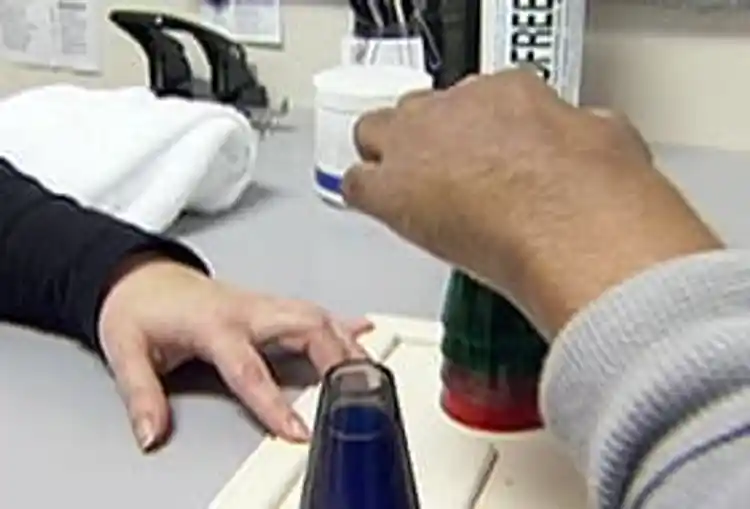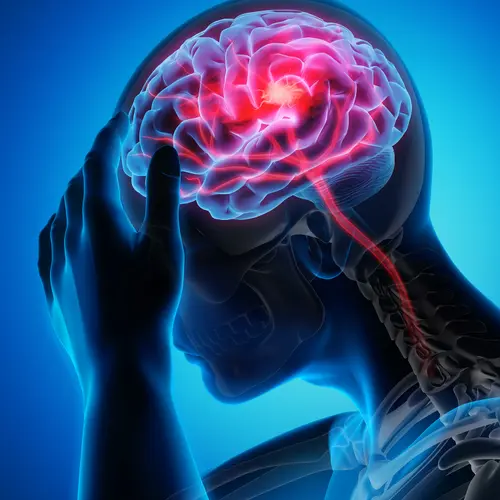Rehabilitating Arms After Stroke

Hide Video Transcript
Video Transcript
Narrator
Ruth Carter lost the use of her right arm when she suffered a stroke a month ago. Kristi Coltrane, Occupational Therapist
I want you to work on here to here. Narrator
Three weeks ago – at the age of 42 – Michael Bainkley had a stroke that affected his right side. Kristi Coltrane, Occupational Therapist
OK, untie and retie. Narrator
Just 10 days ago 64-year-old Horace Cox lost the use of his left arm when he had a stroke. Horace Cox
I can raise my arm now and I can do this here. When I first come here I couldn't do nothing Narrator
These stroke survivors are in the hospital and typically get 3 hours of rehabilitation every day. Their job is to get ready to go home. Kristi Coltrane, Occupational Therapist
They certainly can't do things like dress themselves, bathe themselves and because inpatient rehab is so intensive, it's an excellent way to start their stroke recovery. Narrator
To recover or regain use of the arm – occupational therapists use a variety of tools. Kristi Coltrane, Occupational Therapist
It's really up to the therapist to know what's available and what's going to work best for that particular patient. There is no magic bullet for how to treat a stroke and there is no absolute method that works for everyone. Narrator
One tool is remediation… encouraging use of the affected arm by repeating a motion. Kristi Coltrane, Occupational Therapist
We want to remedy the problem and the problem is you don't have as much grip strength and coordination on this hand or this arm. Narrator
Another tool is adaptation – learning to do things a new way. Exercises like these help the brain re-wire so it can get the arm moving again. Kristi Coltrane, Occupational Therapist
A stroke basically kills part of the brain. It can happen because of a hemorrhage. It can happen because of an ischemic event like a blood clot. Narrator
Remarkably we have a lot of brain cells we don't use…so critical information can be rerouted around the dead cells. Kristi Coltrane, Occupational Therapist
Mrs. Carter does have some spasticity, so like if I try to bring her arm up to strengthen it, it will catch there. Ok, so like here? It stops there. Narrator
Spasticity can occur when there's damage to the area of the brain controlling movement. As a result: Mark Freeman, DO, Physiatrist
That arm becomes tight and spastic. The fingers get flexed, the wrist gets flexed and the arm gets stuck to the side of the body. Narrator
To block spasticity, occupational therapists use various techniques such as this air splint. Other options include medications to relax muscles…and surgery to sever the nerves causing the problem. Once patients leave the hospital they can continue to regain arm movement in outpatient rehabilitation for up to two years following the stroke. Mark Freeman, DO, Physiatrist
Forty-percent of the people will get complete recovery, 40% will get partial recovery and 20% will get very little or no recovery Narrator
Severity of the stroke makes a difference in the final outcome, but it's not the only factor. Kristi Coltrane, Occupational Therapist
How motivated are they? How much are they participating in their therapy? Are they doing their homework? Do they have positive attitude? Narrator
Reno Williams had a stroke a year ago. At first he couldn't move his left side – by the time he left the hospital he could move his arm a little and walk a little… Now he can walk stairs and has greater use of his arm. Reno Williams, Patient
I wanted to get the whole thing moving. Yeah its been hard. Narrator
For WebMD, I'm Rhonda Rowland. 